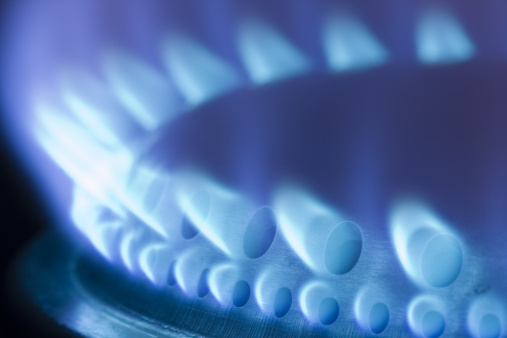Energy
Warmer Weather Dampens Natural Gas Demand, Price Tumbles
Published:
Last Updated:

Natural gas futures for January delivery were trading down about 1.7% in advance of the EIA’s report, at around $3.74 per million BTUs, and slipped further to around $3.69 (up about 0.6% for the day) immediately following the report. Natural gas futures have slipped by about $0.85 per million BTUs since last week.
Winter temperatures have taken a break from the chill before the Thanksgiving holiday and warmer weather is expected to remain into next week. Demand for heating will also moderate, especially in the heavily populated Northeast. The western half of the country and the South are both expected to have warmer-than-normal temperatures, while the upper Midwest is this week’s cold spot.
Stockpiles are about 6.2% below their levels of a year ago and about 9.8% below the five-year average. On a percentage basis, stockpiles were larger last week than they were the week before.
The EIA reported that U.S. working stocks of natural gas totaled 3.41 trillion cubic feet, about 372 billion cubic feet below the five-year average of 3.78 trillion cubic feet and 227 billion cubic feet below last year’s total for the same period. Working gas in storage totaled 3.64 trillion cubic feet for the same period a year ago.
Here is how stocks of the largest U.S. natural gas producers reacted to this latest report:
Exxon Mobil Corp. (NYSE: XOM), the country’s largest producer of natural gas, is down about 1.9% at $93.14 in a 52-week range of $86.91 to $104.76.
Chesapeake Energy Corp. (NYSE: CHK) was down about 1.3%, at $19.65 in a 52-week range of $16.69 to $29.92.
EOG Resources Inc. (NYSE: EOG) was down about 1.1% to $90.79. The 52-week range is $78.01 to $118.89.
The United States Natural Gas ETF (NYSEMKT: UNG) was down about 2.8%, at $18.81 in a 52-week range of $18.73 to $27.89. The low was set earlier in the day.
ALSO READ: Will $60 Oil Ruin North Dakota’s Economy?
After two decades of reviewing financial products I haven’t seen anything like this. Credit card companies are at war, handing out free rewards and benefits to win the best customers.
A good cash back card can be worth thousands of dollars a year in free money, not to mention other perks like travel, insurance, and access to fancy lounges.
Our top pick today pays up to 5% cash back, a $200 bonus on top, and $0 annual fee. Click here to apply before they stop offering rewards this generous.
Flywheel Publishing has partnered with CardRatings for our coverage of credit card products. Flywheel Publishing and CardRatings may receive a commission from card issuers.
Thank you for reading! Have some feedback for us?
Contact the 24/7 Wall St. editorial team.